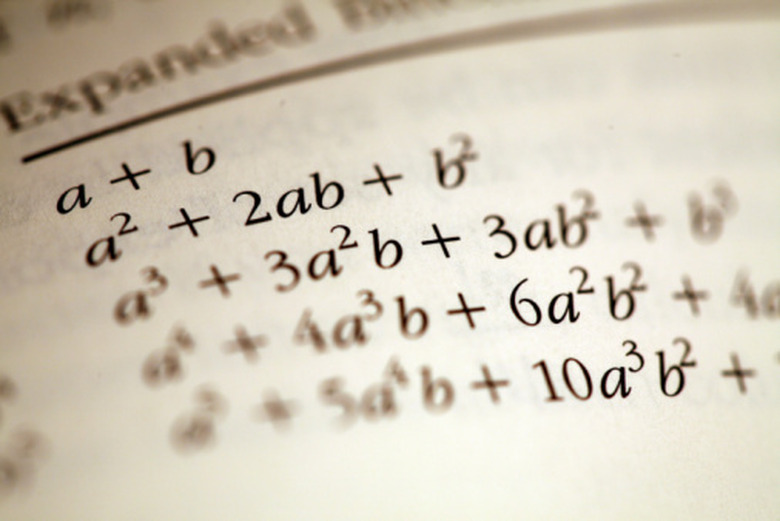How To Do Multiplying & Factoring Polynomials
Polynomials are expressions containing variables and integers using only arithmetic operations and positive integer exponents between them. All polynomials have a factored form where the polynomial is written as a product of its factors. All polynomials can be multiplied from a factored form into an unfactored form by using the associative, commutative and distributive properties of arithmetic and combining like terms. Multiplying and factoring, within a polynomial expression, are inverse operation. That is, one operation "undoes" the other.
Step 1
Multiply the polynomial expression by using the distributive property until each term of one polynomial is multiplied by each term of the other polynomial. For example, multiply the polynomials x + 5 and x – 7 by multiplying every term by every other term, as follows:
(x + 5)(x – 7) = (x)(x) – (x)(7) + (5)(x) – (5)(7) = x^2 – 7x + 5x – 35.
Step 2
Combine like terms in order to simplify the expression. For example, to simply the expression x^2 – 7x + 5x – 35, add the x^2 terms to any other x^2 terms, doing the same for the x terms and constant terms. Simplifying, the above expression becomes x^2 – 2x – 35.
Step 3
Factor the expression by first determining the greatest common factor of the polynomial. For example, there is no greatest common factor for the expression x^2 – 2x – 35 so factoring must be done by first setting up a product of two terms like this: ( )( ).
Step 4
Find the first terms in the factors. For example, in the expression x^2 – 2x – 35 there is a x^2 term, so the factored term becomes (x )(x ), since this is required to give the x^2 term when multiplied out.
Step 5
Find the last terms in the factors. For example, to get the final terms for the expression x^2 – 2x – 35, a number is needed whose product is -35 and sum is -2. Through trial and error with the factors of -35 it can be determined that the numbers -7 and 5 meet this condition. The factor becomes: (x – 7)(x + 5). Multiplying this factored form gives the original polynomial.
Cite This Article
MLA
Braybury, Luc. "How To Do Multiplying & Factoring Polynomials" sciencing.com, https://www.sciencing.com/do-multiplying-factoring-polynomials-8092395/. 24 April 2017.
APA
Braybury, Luc. (2017, April 24). How To Do Multiplying & Factoring Polynomials. sciencing.com. Retrieved from https://www.sciencing.com/do-multiplying-factoring-polynomials-8092395/
Chicago
Braybury, Luc. How To Do Multiplying & Factoring Polynomials last modified March 24, 2022. https://www.sciencing.com/do-multiplying-factoring-polynomials-8092395/
